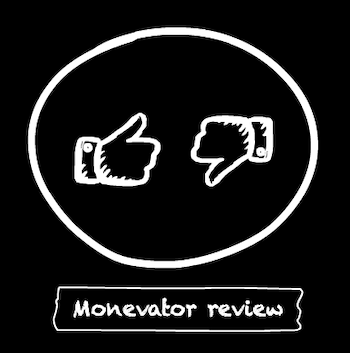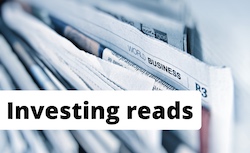The UK property market before the Great Financial Crisis (GFC) of 2007-09 was a bit like crypto today.
Think easy money.
Buyers flipping assets they didn’t understand.
Dodgy maths in the shape of self-certification and 110% mortgages.
And of course a media frenzy, albeit one mediated by cuddly folk such as Kirsty-n-Phil and Sarah Beeny, as opposed to crypto’s West Coast techno-bros high on micro-dosing and 2,200% gains.
A particular highlight of the pre-GFC property market for me was when I pulled out of buying a flat in London in 2003 and my deposit cheque was returned to me by the High Street bank – with a cover letter written in Comic Sans!1
The GFC brought that carnival to a screeching halt – though there was no big crash in prices for most of the UK.
The property market did wobble in London for a year or so. But we didn’t see the massive price dislocations or personal hardship reported from the US – the epicentre of the sub-prime crisis.
Tough on sub-prime, tough on the causes of sub-prime
Despite their own citizens getting off relatively easily, UK and European regulators still took a harder line on property lending following the GFC.
In particular, lenders were required to apply tough ‘stress tests’ on customer’s applications to be more confident they could repay their mortgages.
Ratcheting down the banks’ gearing at the balance sheet level surely also constrained lending.
But repeated national crises (Brexit, Covid), low-to-no economic growth, and a near-zero interest rate backdrop deterring competition was probably as big a factor in curbing the lenders’ animal spirits.
This is not even to get into later politically-led dampeners on the housing market, such as extra taxes and regulations for the previously ebullient and lucrative buy-to-let sector, and repeated hikes in stamp duty.
The result? Below you can see that quarterly mortgage volumes is still running below pre-GFC levels:
Total value of gross mortgage lending and annual percentage change in the United Kingdom (UK) from 1st quarter 2007 to 2nd quarter 2024

Source: Statista / FCA
Those numbers are not adjusted for inflation, either. Total inflation between 2007 and 2025 clocked in at 66% by the CPI measure, according to the Bank of England.
In that light the mortgage volume stagnation looks decidedly sickly.
Is there a case for looser lending?
Easing up the post-GFC restrictions on lending a tad would hardly seem to be a case of pouring oil onto flames then.
It’d be more like me making my girlfriend a coffee on a Sunday morning, nudging her out of her sleepy coma.
For sure the government would like to see more vigour in the market. Labour was elected on a growth platform, yet virtually all its major policy moves so far have been anti-growth. Perhaps the only big exception has been work on the planning laws, towards its target to build 1.5m new homes by the end of Parliament.
While I think it’s about as likely to hit that goal as I’m likely to hit the beaches of Ibiza this summer sporting a body fat percentage of under 10%, the housing industry has been unusually optimistic about Labour’s Planning and Infrastructure Bill.
So maybe there will be an uptick in homes built, at last?
However people still need to be able to buy them. And while you might say the problem is houses are too expensive, actually adjusted for inflation UK house prices have gone nowhere for 15 years:

Source: allAgents/Nationwide
A lot of people believe we’re still in the midst of an ongoing property bubble.
But while house prices are certainly still elevated compared to 30 years ago on a price-to-earnings basis, say, the heavy puffing that inflated the UK market was all done back in the pre-iPhone era.
I’d agree tougher lending restrictions aren’t the only reason for stagnant real prices – I hinted at some other causes above – but they must be in the mix.
You think it’s a good thing house prices stopped rising exponentially in real terms?
I agree with that too – but again that’s an article for another day.
Casus belli for a war on mortgage restrictions
So to summarise, we have a government that aspires to build 1.5m new homes.
For political reasons, it clearly wants most of these homes to be bought by owner-occupiers.
If they’re not buying already – when they’re now competing with recently-hamstrung would-be landlords – then I’d suggest that for some access to finance must be a hurdle, given stagnant real prices.
We also have Labour’s growth agenda going nowhere. And nothing juices the UK economy like a good old-fashioned house price boom.
Finally, the big banks are flush with cash. As interest rates expectations decline I’m sure they’d love to lend more of it out at today’s chunkier rates to help them stay that way.
Signs that mortgage lending is already loosening
With the Financial Crisis starting to sound like the war stories of another era to today’s young buyers, the pressure from upcoming generations to ease mortgage lending rules can only grow.
This will be especially true while paying down first-time buyer mortgages is cheaper than renting.
Indeed I think you can already see signs that it’s going to get easier to borrow.
The government says so
By far the biggest giveaway – we’re talking tap into an open goal territory here – is the Government has said it wants to ease lending restrictions.
In December last year, senior Labour leaders wrote to the FCA asking them for ideas on boosting economic growth. In response the FCA said in January that it would look at ways of ‘simplifying responsible mortgage lending’.
The FCA set out its next steps in March, noting:
When lenders decide whether to approve a mortgage, they test whether a borrower could still afford their mortgage at higher interest rates.
As interest rates fall, the current market approach to interest rate stress testing may be unduly restricting access to otherwise affordable mortgages.
The FCA wants to ensure firms are aware of the flexibility its rules provide, and that creditworthy consumers can access the affordable mortgage they need, supporting home ownership.
I read this as code for: as a first step, let’s get lenders pushing the current rules to the limit.
A public consultation on further legislative changes begins next month.
An easier Threadneedle Street
The Bank of England has also got the letter – at least figuratively – and seems to be answering the call.
Its Prudential Regulation Authority said in March it would look to ease leverage restrictions on lenders:
The Prudential Regulation Authority (PRA) is consulting on changing the retail deposits leverage ratio threshold to £70 billion – an increase of £20 billion.
The leverage ratio is designed to give a simple percentage indicator of how much capital a firm has to fund its activities. The PRA currently requires firms with over £50 billion in retail deposits or £10 billion of non-UK assets to meet a minimum leverage ratio requirement of 3.25% plus buffers. These thresholds took effect in 2016 and 2023 respectively, and are designed to capture major UK banks, building societies and investment firms.
The PRA is now proposing to raise the retail deposits threshold, increasing it to £70 billion to reflect nominal GDP growth since 2016. This increase would ensure that the threshold continued to capture major UK firms, whilst smaller firms below the new threshold would have more space to grow before becoming subject to the leverage ratio requirement.
This is small beans in the grand scheme of things. It will only be material for a few challenger banks I think. And again, note the inflation angle – it’s only looking to reset the bar back to 2016 levels.
But it might mark a change of direction?
As an aside these kind of hard-coded numeric limits seem to me typical of post-crisis regulation.
Generously, they leave nobody in any doubt about the rules. Arguably they’re designed to make headlines.
Anyway, banking trade body UK Finance wants more. Its Plan for Growth – set out in March – calls for an easing to regulatory limits on the share of mortgage lending done at loan-to-income ratios over 4.5x, for example.
Lenders are doing it for themselves
Compiling the products and services section of the Weekend Reading links for Monevator keeps me fairly abreast of developments in the mortgage realm.
Here’s a few recent-ish innovations I’ve noticed.
Rent-to-own mortgages
A few specialists now offer rent-to-own mortgages, which seem to be a US import. The basic idea is the buyer rents for a few years in lieu of putting down a deposit, before shifting to repaying a mortgage.
As someone who helped pay off several landlords mortgages for 25 or so years in London, it doesn’t seem the worst idea to me. Not everyone can tap the Bank of Mum and Dad, remember.
But you’d always want read the small print and such agreements definitely won’t be right for everyone.
Cashback is back
In 2006 it seemed like every mortgage came with a cash bung – Northern Rock’s infamous ‘Together’ mortgage enabled borrowers to lend up to 125% of the property value – but the practice largely died out after the GFC.
However in a more modest way it’s made a recovery, with the recent stamp duty hikes the pretext for one building society offering £5,000 cashback.
Buy-to-let lenders are doing it too, though isn’t this cashback just a rebate on high arrangement fees?
Longer mortgage terms touted
Longer mortgage terms lower monthly repayments. This can enable a borrower to service a bigger mortgage on a lower income today. (For a higher total cost, less flexibility, and a reshuffling of the risks).
This has largely happened already. The share of new first-time buyer mortgages with terms over 30 years breached the 50% mark a few years ago. A decade or so ago only a quarter of terms were so long.
Could it go further?
Japan famously sees some home buyers taking out 50-year mortgages and passing them down to their children. Boris Johnson said he was considering such cross-generational mortgages back in 2022.
That same year new lender Perenna gained a license to offer fixed-rate mortgages with terms up to 50 years. I’m not sure how often it actually writes mortgages with such a lengthy term though. Later coverage cites the usual 20-30 years.
Nearly all of us these days work through our ultimate mortgage term via a succession of shorter fixed-rate deals. These are usually two to five years, but you do read more about ten-year fixed-rate mortgages these days. Even Lloyds currently offers them.
Taking out a ten-year mortgage in 2022 at a rate of 2.73% looks like a steal in retrospect.
Lenders hiking maximum loan-to-income ratios
April Mortgages announced it would offer seven-times income mortgages to high earners a few weeks ago. This followed on the heels of mainstream lenders like Nationwide offering to lend to first-time buyers with small deposits at six-times income and Natwest pushing to five-and-a-half times.
For what it’s worth, buy-to-let mortgage product options reportedly hit a 14-year high in February, too.
Interest rates are falling
Okay, this one isn’t about changing the rules. But just as higher interest rates since 2022 have shown how hard it is for many young people to get a mortgage – despite their alreadu paying high rents – so rates coming down should improve mortgage accessibility more generally.
Also, easier financing and looser regulation often do go hand-in-hand.
That might seem counterintuitive. After all, if mortgage rates are more affordable, there’s not such a pressure to tweak the rules to enable more buyers to squeak through the stress tests, say.
True – it’s more that cheap money papers over a lot of sins, at least for a while.
Looser regulation likely won’t show up in rising repossessions or other signs of distress when rates are low, at least outside of job-scything recession.
For most of the past 15 years we had tough regulation to guard against the perils of then low rates. While few expect rates to get so low again, even mildly lower rates could make it easier to sneak high loan-to-income ratio mortgages or some new spin on self-certification mortgages out the door in the context of a more relaxed regulatory environment.
Before the bust, the boom
The dance between regulation, relaxation, and the economic cycle has gone on since ancient times.
In 2025 I judge we’re finally coming out of the ‘never again’ phase that followed the GFC.
Like the Great War, the GFC was existentially terrifying enough to scar a generation of policymakers.
But eventually memories – and lived experience – fades.
To be fair, we could probably do with slightly easier mortgage lending. And I think we’ll get it, albeit against a chorus of warnings that something will break.
But nothing will break – not at first, anyway – and this will embolden more substantial relaxation, setting the stage for another crisis in some distant future.
This is especially likely when you consider the wider backdrop of the sluggish growth in living standards and ordinary people’s feeling that they’re not doing as well as they should versus the guys next door.
(Never mind any sci-fi comparisons to come versus the AIs/robots in the server farm down the road!)
The will to deregulation
In such a climate, politicians are likely to see ‘a more supportive lending environment’ – making it easier for people to get in hock – as a way to enable voters to feel better-off without the State footing the bill.
So in the absence of a disaster, they will increasingly give them what they want.
Again this can’t go on forever. Debt is debt, with all its costs and complications. Easy money isn’t easy.
But I can see see populist politicians on the right, at least, wanting to deregulate business and stoke animal spirits. That was Trump’s agenda, after all, before he went all North Korea with his tariffs.
Imagine a Nigel Farage type in power saying “I trust the British people more than fat cat bankers or no-nothing politicians in Whitehall” as he scraps all curbs on lending. Perhaps we’ve got that to look forward to?
The good news for those of us who are good with money is it should get easier to access mortgages.
The bad news is that not everyone is good with money.
But that’s a problem for another day!
- Really…there’s a photo in the Monevator archives somewhere. [↩]













